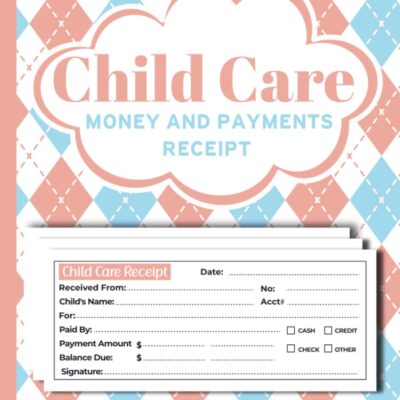Welcoming a new baby into the world is an exhilarating experience filled with joy, love, and, let’s be honest, a fair amount of anxiety for new moms. Among the myriad of challenges new parents face, one of the most significant is breastfeeding. While breastfeeding is incredibly natural, it can feel anything but easy in those early days. One of the best ways to nurture a successful breastfeeding experience is by finding comfortable positions that work for both mom and baby. Let’s explore some effective breastfeeding positions to help new moms feel more at ease during this beautiful bonding time.
The Importance of Comfort
Breastfeeding is a shared experience between mother and baby, and comfort is key to making this journey enjoyable. When both mom and baby are comfortable, it enhances latching, allows for longer feeding sessions, and reduces stress. Additionally, finding the right position can help prevent common issues like sore nipples and engorgement.
So, without further ado, let’s dive into some of the most popular breastfeeding positions.
1. The Cradle Hold
The traditional cradle hold is perhaps the most recognized breastfeeding position. In this hold, you sit comfortably with your baby cradled in your arm, their head supporting in the crook of your elbow while their body lies across your lap.
How to Do It:
- Find a cozy place to sit, preferably with good back support.
- Position your baby, ensuring their belly is against yours.
- Gently guide your baby to latch on your breast, ensuring their mouth opens wide to take more than just the nipple.
Pros:
- Offers a close, bonding experience and is convenient for most settings.
- Provides good visibility for breastfeeding mothers.
Cons:
- If your baby is small or has trouble latching, this position might require some adjustment.
2. The Cross-Cradle Hold
Similar to the cradle hold but with some tweaks, the cross-cradle hold allows you to use your opposite arm to support your baby’s head. This might feel more intuitive, especially for new moms learning how to guide their babies to latch.
How to Do It:
- Sit back comfortably and place your baby across your lap, held by the arm opposite to the breast you’re using.
- Support their head with your hand and gently bring them to your breast to latch.
Pros:
- Gives you more control over the baby’s positioning and latch.
- Great for newborns who are still learning to latch on.
Cons:
- Can be a bit awkward at first, particularly if you’re still getting used to handling your baby.
3. The Side-Lying Position
This position is perfect for nighttime feedings or if you have any soreness in your back or arms. It allows both mom and baby to lie side by side, which can create a relaxed atmosphere for feeding.
How to Do It:
- Lie down on your side with a pillow supporting your back.
- Position your baby so they’re facing you and belly-to-belly.
- Use your top arm to support your baby’s head while helping them latch.
Pros:
- Excellent for night feeds as it promotes more sleep for both mom and baby.
- Reduces back strain, making it easier for chronic pain sufferers.
Cons:
- It can be challenging to learn how to position your baby to latch effectively.
4. The Football Hold
The football hold is an ideal position for mothers who have had a c-section or have larger breasts. This hold allows you to carry your baby under your arm, resembling carrying a football.
How to Do It:
- Sit comfortably and place a pillow next to you for support.
- Tuck your baby under your arm on the same side as the breast you’ll be using, keeping their head in line with your nipple.
- Support your baby’s back with your hand while guiding them to latch.
Pros:
- Good positioning for babies with reflux since they remain upright.
- Great for mothers with larger breasts or those recovering from surgery.
Cons:
- This position can feel a bit awkward at first and may take some practice.
5. Laid-Back Breastfeeding
This is a more laid-back approach, where you recline slightly and let your baby naturally find their way to your breast, using gravity to assist.
How to Do It:
- Lie back comfortably with pillows for support.
- Place your baby on your chest, allowing them to wiggle down towards your breast.
Pros:
- This position promotes a relaxed feeding environment, reducing stress on both mom and baby.
- Encourages natural latch and can be great for self-attachment in newborns.
Cons:
- It may require some adjustment to find the right angle that works for both mom and baby.
6. The Kangaroo Hold
The kangaroo hold is a skin-to-skin position that’s wonderful for bonding. While standing or sitting, you carry your baby upright against your chest, allowing them to latch while feeling your warmth.
How to Do It:
- Hold your baby upright against your chest, ensuring they are secure and safe.
- Allow them to search and latch onto your breast.
Pros:
- Facilitates bonding and skin-to-skin contact, which can help calm both mom and baby.
- Encourages natural breastfeeding instincts in newborns.
Cons:
- This position requires good core strength and stability to prevent dropping the baby.
Tips for Success
Regardless of the position you choose, here are some additional tips to enhance your breastfeeding experience:
- Use Support: Pillows are great for support to ensure both your back and arms aren’t straining.
- Stay Relaxed: Take a few deep breaths and try to relax, which can help your milk flow and make feeding easier for you both.
- Practice Makes Perfect: Experiment with different positions until you find what works best for your comfort and your baby’s latch.
Final Thoughts
Breastfeeding can be one of the most beautiful ways to nourish your baby and build a deep connection. By experimenting with different positions and finding what fits best for you and your little one, you can create a more enjoyable and comfortable experience. Remember, though, if challenges arise, seeking help from a lactation consultant or a breastfeeding support group can provide guidance tailored to your unique situations. Ultimately, listening to your body and your baby is the key to a successful breastfeeding journey. Happy feeding!






